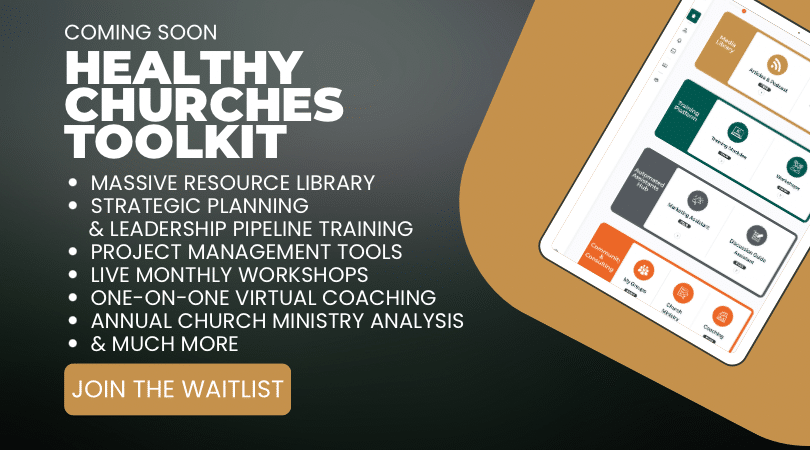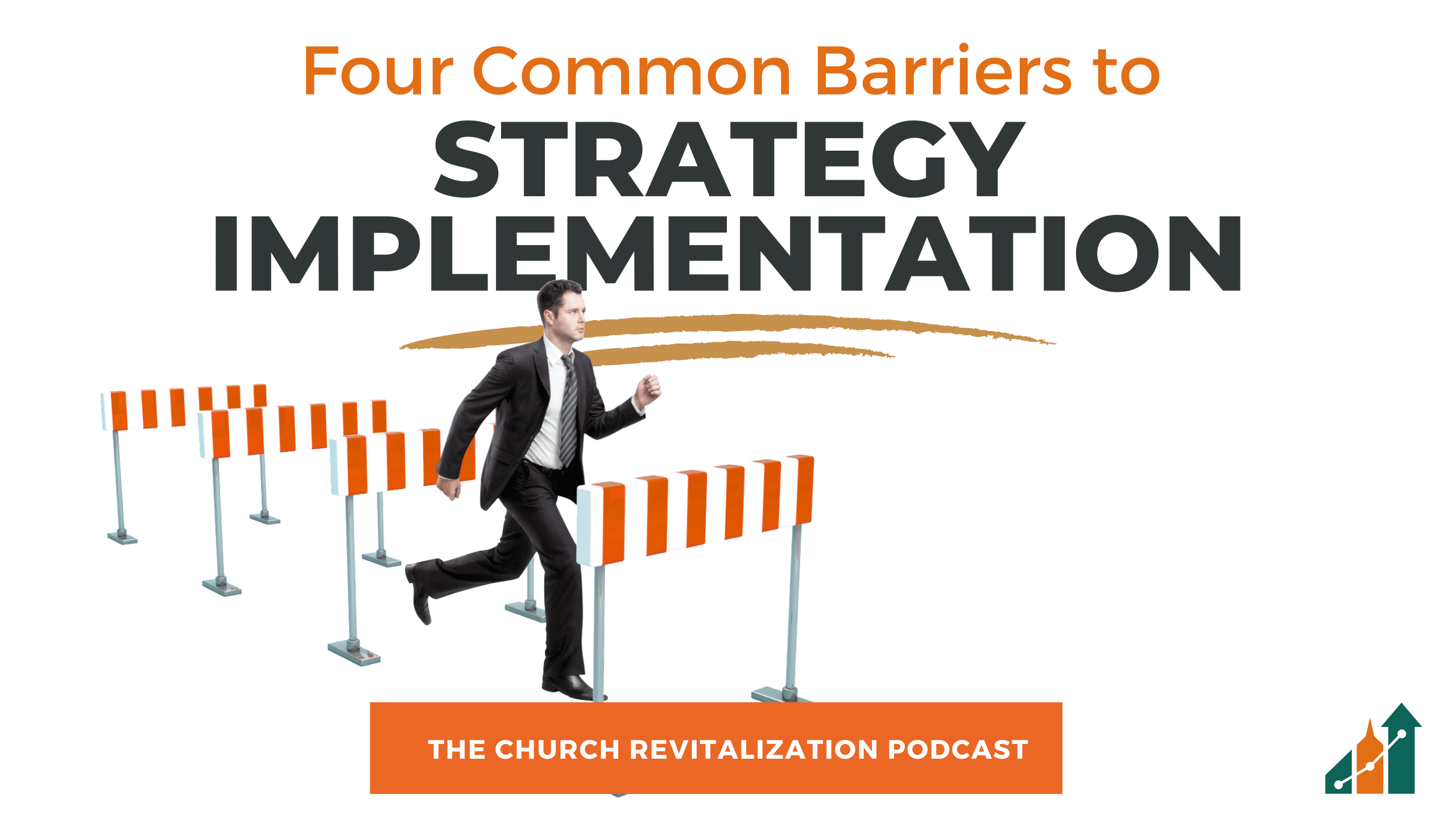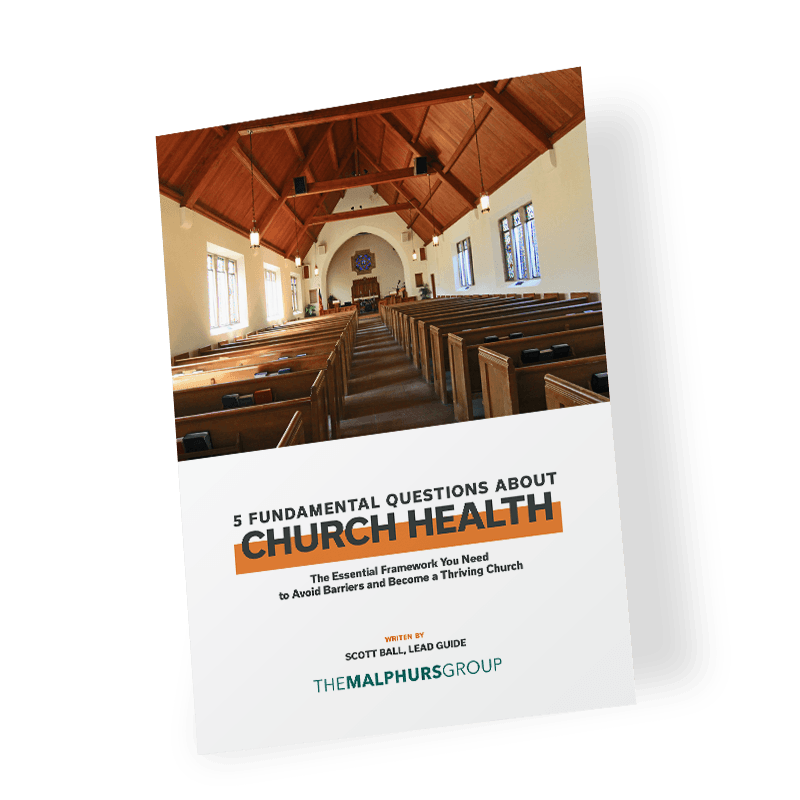The Church Revitalization Podcast – Episode 164
Making plans is fun. Following through is hard. Most churches fail before they even begin the implementation journey because they did not account for the barriers. It’s like starting a road trip with a car full of kids and not expecting a few delays!
Just like you’d look at the Google Maps time-to-destination estimate with a healthy dose of skepticism, you should stare at your beautiful whiteboard full of ideas with an understanding that to get from “here” to “there,” you’re going to encounter a few roadblocks. But anticipating the barriers to implementation can make them less frustrating. This is especially true if you know which barriers should be on your radar.
While there is no comprehensive list of potential barriers to implementation, our team at the Malphurs Group has guided hundreds of churches through strategic planning and we’ve noticed four common barriers. While these barriers might manifest slightly differently in each church, the root causes are the same.
Before we explore each barrier, it’s important to know that most of these barriers cannot be avoided. They can only be managed and worked through. Just like it’s often impossible to route around a traffic jam on your road trip (because you’ll likely just run into another one, or take just as long to navigate around it), the best way to handle barriers to implementation is to understand that the only way that they stop your progress is if you quit!
Determine right now that you’re going to work through any barriers you encounter. Commit to the action. If you’ll do this, then you’ll be able to work through these four common barriers to implementation.
Subscribe below to never miss an episode.
Barrier 1: The Status Quo
An object in motion tends to stay in motion. But an object at rest tends to stay at rest. It’s not just true in physics; it’s true in your church! Overcoming inertia is a challenge. Like getting out of bed in the morning, the comfort of what’s been–even if the current situation is resulting decline–is an incredibly difficult barrier to overcome.
We’ve written before that in a declining church, groups tend to collude against change. This is true in small and large churches. In smaller churches, the barrier of the status quo is often wrapped up in the packaging of “tradition.” By tradition, we don’t necessarily mean liturgy or hymns. Instead we mean the habits and practices that determine how the church operates, runs ministries, and makes decisions. You’ll know this barrier is creeping up on you when someone says, “We’ve always done it this way.”
It’s always good to remind yourself and others that your current habits may have contributed to stagnation or decline, therefore that “we’ve always done it this way” might be a red flag! It’s like gaining weight, and when someone warns you not to grab a candy bar, you say, “But I’ve always eaten this!” Yes! But your metabolism isn’t what it used to be. So we need new food habits!
In larger churches, the staff are often the ones who collude against change. Staff get used to operating a particular way, and feel entitled to free reign on how they “do what they’re paid to do.” This is especially true if the staff needs to be restructured or jobs shifted in order to accomplish the church’s vision and strategy. Understandably, staff can feel threatened or defensive of their performance.
It’s important to remind staff that they were hired because the church believes in their skills. But the team is accountable to the Great Commission mission–not a job description. Therefore, a degree of flexibility is needed and an openness to make changes so that we can ensure effectiveness.
The best solution for overcoming the inertia of the status quo–no matter how it manifests itself–is to commit to a series of small actions in a short period of time. Imagine you decided to paint your living room. The weight of the whole project is overwhelming–and if you wait too long, the current color will grow on you, and you’ll give up on the project. But if you first commit to taping the room. Then to lay dropcloths. By then, it would be silly not to at least work on the trim work. Now that there’s paint on the wall, you can’t very well leave it partially painted! Before you know it, the room is painted.
Likewise, if you can commit to a simple action–schedule a meeting, make a budget, etc, before you know it, the project will feel inevitable and the barrier of the status quo will be behind you.
Barrier 2: Inward Focus
Churches fail to execute because they get paralyzed in deliberating how decisions will impact current stakeholders. This is especially true in churches that are led by S-Type leaders. If your church is too concerned about how a particular strategy will make people inside the church feel, you’ll never get anything done. Certainly you’ll never make a bold move.
The simple solution is to start thinking about how a decision will impact outsiders and newcomers. Additionally, you can start framing decisions through the lens of opportunity cost.
If we don’t add the second service, will we be able to reach new people? If we don’t change our Sunday School program, will newcomers never fully integrate into the church family? What if we don’t re-envision our Trunk or Treat outreach? Will we miss out on actually connecting with the hundreds of families that visited our campus?
When you start to ask these types of questions, you’re prompted to act differently. If you get stuck asking questions like “How will this affect the seniors/that particular family/that board member?” you’ll stop short of executing the vision God has for your church.
To be sure, you shouldn’t disregard the needs or preferences of your existing congregation entirely. But in our experience, most churches are not at risk of doing this. Instead, they’re most likely making decisions exclusively based on existing preferences.
Force yourself to think of the outsider, the newcomer, the guest. If you can shift your thinking, the barrier of an inward focus will be left in the dust.
Barrier 3: Distraction
The most insidious barrier is that of distraction. More churches stall out on their journey of implementation due to distraction than anything else. We all know about the tyranny of the urgent–but the keyword here is tyranny! When we allow the most urgent things to dominate our minds and workload, we are slaves to that tyrant.
Stephen Covey popularized the Eisenhower Urgent/Important Matrix. In this matrix, you’re asked to sort into four categories: “Important and Urgent,” “Important and Not Urgent,” “Urgent and Not Important,” and “Not Important and Not Urgent.” Based on these four categories, you should behave differently.
Most church leaders are dominated by the “Important and Urgent,” along with the “Not Important and Urgent” types of items. What gets neglected are the “Important and Not Urgent” items. The majority of significant change occurs in churches that are committed to accomplishing the “Important and Not Urgent.”
Eisenhower recommended the following way of tackling these four types of action items.
Urgent and Important: Do it now. Just get it done.
Important and Not Urgent: Schedule it. Commit to a specific time and specific action.
Urgent and Not Important: Delegate it. Pass this action item off to someone capable of getting it done, but don’t use your limited capacity to do it.
Not Important and Not Urgent: Don’t do it. Don’t waste your time!
If you follow these principles, you can push through the tyranny of the urgent and overcome the barrier of distraction.
Barrier 4: People
We will dedicate an entire article on how to address problem people. But suffice it to say, often our fear of criticism will keep us from executing tasks. Other times, people with power in the church can flat-out derail a process of implementation!
It’s important to know that in every organization, there are people who will resist any and all change. But this number is always in the single digit percentages–around 5%. You should know that a large percentage of people are likely to complain about change–as much as 40-60% based on the personality makeup of your particular organization. But they will eventually get on board, even if they’ll make noise along the way.
We’ll address the people barrier in more depth in our next article. All we’ll note here is that the key to overcoming the people barrier is recognizing that the primary obstacle is not the people but your own willingness to hear criticism. You’ll need thick skin, and people around you who will encourage you.
If you remain committed to the course, the actual opposition will be minimal. There may be a lot of noise, but if you can endure the criticism, you can get through to the other side.
Implementing strategy in the church is not simple. Expect barriers. But recognize that when God is calling you to follow His plan for your church, He will give you everything you need to push through and fulfill His vision.
BONUS: Watch this episode on YouTube.


Scott Ball is the Vice President and a Lead Guide with The Malphurs Group. He lives in East Tennessee with his wife and two children. (Email Scott).

